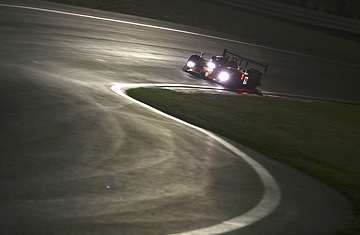
Come June, 24-year-old Japanese graduate student Yusuke Sakamoto will face an unusual final exam. While most of his classmates at Tokai University near Tokyo will be sweating out answers in a classroom, Sakamoto will be in pit lane at France's legendary Le Mans race track, hoping his 550-horsepower school project survives one of the world's great endurance races.
Sakamoto and his team of Tokai University engineering students have spent the past seven years designing and developing a car to run the storied 24 Hours of Le Mans, to be staged this year on June 14-15. The Tokai University-YGK Power machine, unveiled at an April 24 press conference, is the first entry by a university in the 85-year history of the French race. "Now we are really going," Sakamoto says. "So we can't fail."
The project is the brainchild of Tokai University Professor Yoshimasa Hayashi, a former top automotive engineer with Nissan Motor and author of the Japanese book To Make the World's Best Race Car. In 2001, Hayashi decided to spice up the school's drab curricula with a little real-world engineering project: a competitive endurance racer, designed and built by his students. "Studying a race car is a great way to learn a variety of advanced technologies," says Hayashi. "And, of course, it's appealing to young students."
Hayashi gave a team of 17 the assignment to build a car that was durable yet powerful and highly maneuverable — at the same time instilling in his charges a sense of teamwork, responsibility and commitment. Of course, college students couldn't create such a sophisticated machine from scratch. Much of the work has focused on fine-tuning components purchased elsewhere, such as the chassis, which is manufactured by Courage-Oreca of France but has been highly modified to fit the students' specifications. The car is powered by a four-liter V8 turbocharged engine — meant to be compact, and costing half as much as a conventional racing engine — created for the university by Japanese venture company YGK, to which Hayashi is a consultant.
The project has been a vast collaboration, completed on a very tight budget. Since it began in 2001, more than 150 students have participated. Necessity has sometimes forced them to come up with innovative solutions: For example, the team decided that instead of using a bell housing (which contains the car's clutch) made of expensive magnesium, students designed and built a lightweight substitute made of cheap, sturdy iron. Hayashi won't disclose the car's total development costs, but he says it will cost some $785,000 just to compete at Le Mans. Funds have come from Tokai University, sponsors, and from Hayashi's own pocket. Additional cash is trickling in from a donation drive backed by the governor of Japan's Kanagawa prefecture, and Nissan CEO Carlos Ghosn.
Now that the car, dubbed the TOP03 (Tokai Original Prototype 03), is completed, Hayashi's team is ready to begin testing, as well as learning how to manage a racing campaign in time for Le Mans. While Hayashi plans to hire some professional pit crewmen at the circuit, during the competition students will handle most of the track communication, data analysis and race coordination, with Hayashi serving as coach. They'll have professional help behind the wheel: Three experienced drivers, led by Toshio Suzuki, winner of the 1992 Daytona 24-hour race, have signed on.
Hayashi reckons the TOP03 has a top speed of 193mph, fast enough to spar in the LM P1 class with well-financed factory teams from Audi of Germany and France's Peugeot. The immediate goal is to complete the race, but Hayashi is already aiming at a podium finish at Le Mans within three years. At the same time, he hopes his students will learn more than engineering. "To win, the team is the most important," Hayashi says. "However advanced your machine may be, it's the people who bring out the best. I hope they will cherish each moment."
As for team leader Sakamoto, he's decided not to pursue a career designing electronic circuits and now hopes to become a chief engineer at a major car manufacturer. Test day is approaching. "I'm so happy the car is finally done," he says. "We will have to drive well so we can meet everyone's expectations." Go, speed racer, go.
